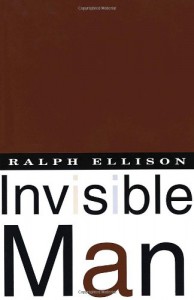Invisible Man
 Ralph Ellison’s the Invisible Man (1952) pivots on the decline of culture, the breakdown of metanarratives, and the corresponding disintegration of the self. Modernist heroes act within the dilemma of an “as if” world; they often recognizes their world no longer makes sense but use various devices to validate their experiences anyhow.
Ralph Ellison’s the Invisible Man (1952) pivots on the decline of culture, the breakdown of metanarratives, and the corresponding disintegration of the self. Modernist heroes act within the dilemma of an “as if” world; they often recognizes their world no longer makes sense but use various devices to validate their experiences anyhow. In the Invisible Man the self no longer has a name. Ellison’s narrator keeps trying to attain an identity, donning one role after another—high school graduate, college student, a “first” job at the ironically-named “Liberty” paints company, and his experience as a Marxist. None of the narrator’s attempts at legitimization succeed and he is driven underground, either to escape life or to gather strength. We cannot be sure.




